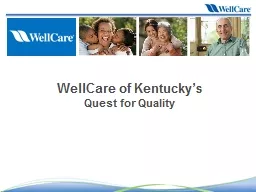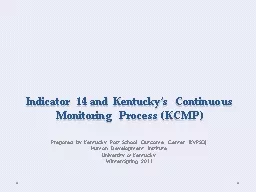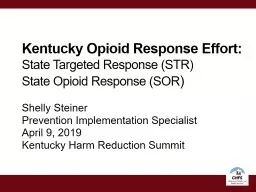PPT-WellCare of Kentucky’s
Author : aaron | Published Date : 2019-01-28
Quest for Quality Why the Quest for Quality Its the RIGHT thing to do for the patientmember Helps your clinic reach targeted goals clinical and financial Focuses
Presentation Embed Code
Download Presentation
Download Presentation The PPT/PDF document "WellCare of Kentucky’s" is the property of its rightful owner. Permission is granted to download and print the materials on this website for personal, non-commercial use only, and to display it on your personal computer provided you do not modify the materials and that you retain all copyright notices contained in the materials. By downloading content from our website, you accept the terms of this agreement.
WellCare of Kentucky’s: Transcript
Quest for Quality Why the Quest for Quality Its the RIGHT thing to do for the patientmember Helps your clinic reach targeted goals clinical and financial Focuses on your clinic as the medical home for the patient which many of you have as a goal for your facility. Industrial Hemp. Hemp has been grown for over 12,000 years. Hemp . was a major crop in . Kentucky early 1900’s and again during World . War II. .. The United States is the only industrialized nation that does not allow production of industrial hemp. Fugates. of Troublesome Creek . Six generations after a French orphan named Martin Fugate settled on the banks of eastern Kentucky's Troublesome Creek with his redheaded American bride, his great-great-great great grandson was born in a modern hospital not far from where the creek still runs. . Board Orientation. February 2011. 2. UWKY . Board Member Orientation. Overview . Responsibilities of Boards. How We Serve Our Members. Customer . Satisfaction. Financial Overview. 3. United Way of Kentucky. 32. nd. Annual Winter Conference. February 6, 2014 . Presentation by:. Juva Barber. Executive Director. Kentuckians for Better Transportation. Working for . All. Modes of Transportation. Air Highways Public Rail Waterways. Prepared by Kentucky Post School Outcome Center (. KyPSO. ). Human Development Institute. University of Kentucky. Winter/Spring 2011. March 2011. . . Greetings ~ . . The purpose of this document is to provide an example of self-monitoring for Indicator 14 using the Kentucky Continuous Monitoring Process, or KCMP.. The Kentucky Derby is the most famous horse race in the world. The race takes place the first Saturday in May at Churchill Downs in Louisville, Kentucky. Many famous people, politicians, and people from all around the world visit Kentucky for the Derby. . This part of Kentucky is relatively flat lying, with numerous lakes, ponds, sloughs, and swamps. Since it is made up of mostly sediment, the soils are easily eroded. . The Jackson Purchase is the lowest spot in the commonwealth at only 260 feet above sea level.. Kentucky Division of Water. Frankfort, KY. November, 2013. Why . Nutrient Reduction. ?. Eutrophication resulting in:. Stream Impairments. 2800 stream miles in Kentucky. Harmful algal bloom (HABs) advisories. THE RACE. The horses race for 1 ¼ miles which takes about 2 minutes.. The Kentucky Derby is sometimes called the “most exciting two minutes in sports”.. THE RACE. All horses that run in the Derby are 3 year old horses. Each colt (young male horse) must carry 126 pounds. Each filly (young female horse) must carry 121 pounds.. February 2011. 2. UWKY . Board Member Orientation. Overview . Responsibilities of Boards. How We Serve Our Members. Customer . Satisfaction. Financial Overview. 3. United Way of Kentucky. Incorporated in 1984. Kentucky Opioid Response Effort: State Targeted Response (STR) State Opioid Response (SOR ) Shelly Steiner Prevention Implementation Specialist April 9, 2019 Kentucky Harm Reduction Summit Statement of Purpose Trends and Geographic Variation. 2000 - 2008. Presented by. Thomas C. Tucker, PhD, MPH. Associate Professor. Department of Epidemiology . College of Public Health. University of Kentucky. and. Senior Director for Cancer Surveillance. PURPOSE DRIVEN GENETICSTHINK GREENNATURALLYTMThe Green Guard H2O series identi31es turfgrasses with clear water conservation bene31ts The seal is your guarantee that the grass seed has been tested b Pag e 1 of 5 Emergency Preparedness Update for September 27, 2021 Gov. Beshear Updates Kentuckians on COVID - 19 Vaccine Booster Recommen dations Five monoclonal antibody injection teams coming to K
Download Rules Of Document
"WellCare of Kentucky’s"The content belongs to its owner. You may download and print it for personal use, without modification, and keep all copyright notices. By downloading, you agree to these terms.
Related Documents














